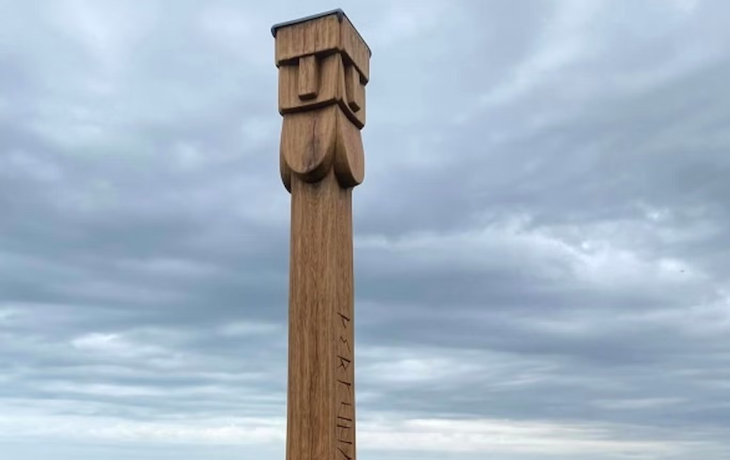One of the stranger events of the summer of 2023 is the sudden and unexplained appearance, one night in early August, of an eight-foot tall carved wooden pole on a coastal path in Kent depicting the Baltic thunder god Perkūnas. The impressive sculpture is carved from a single piece of wood crowned by four stylised bearded faces, with an inscription in runic-style lettering up one side, ‘PERKUNAS 2023’.
No permission was sought to erect the carving, and its creator is unknown – as is the purpose of the installation. Is it a gift from the artist? A pagan religious act? An image set up for protection? One social media user suggested that, since the spot where the pole stands is at the closest point to Continental Europe, a Baltic worshipper of Perkūnas might have set up the sculpture there as the next best thing to making an offering to Perkūnas on native soil.
As late as the 1780s, Catholic priests were still travelling to remote villages in Lithuania and instructing local people to cut down trees which they had been worshipping
Who is this mysterious Baltic god? Perkūnas (or Pērkons in Latvian) is broadly equivalent to the Slavic thunder god Perun and has similarities to the Norse god Thor.

Britain’s best politics newsletters
You get two free articles each week when you sign up to The Spectator’s emails.
Already a subscriber? Log in






Comments
Join the debate, free for a month
Be part of the conversation with other Spectator readers by getting your first month free.
UNLOCK ACCESS Try a month freeAlready a subscriber? Log in